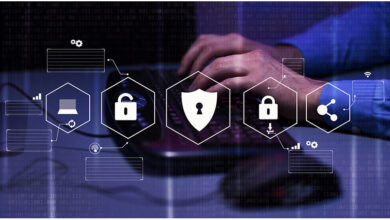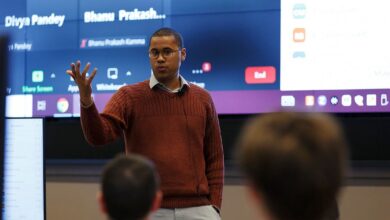5 things to know – Firstpost

The Stimson Center released the preliminary results of its investigation of the UN Security Council’s possible role in combating cyber threats ahead of the debate Image Courtesy Reuters
The international community needs to be up to date with the continuously changing world of cyber threats. The consequences for global peace and security are obvious, ranging from a growth in the scope of malevolent cyber operations to the dissemination of increasingly destructive cyberstrategies. The UN Security Council has not yet played as prominent a role as one might anticipate, despite the UN establishing a number of venues and processes to address cyber and digital threats.
Still, momentum is building. The second High-level Open Debate on cybersecurity by the Council was held in South Korea on June 20. Member nations had a significant chance to voice their opinions on how the Security Council should step up efforts to uphold global peace and security in the cyberspace.
The Stimson Center released the preliminary results of its investigation of the UN Security Council’s possible role in combating cyber threats ahead of the debate.
Dealing with changing landscape of cyber threats
Thursday’s UN Security Council (UNSC) meet on cybersecurity comes after South Korea co-hosted an Arria-formula summit with the US and Japan in April 2024. The Arria-formula meeting gave governments and briefers a chance to voice their opinions on how to strengthen the UNSC’s role in combating cyber threats, while also primarily focusing on the constantly changing landscape of cyber threats.
“Maintenance of International Peace and Security: Addressing Evolving Threats in Cyberspace” will be the topic of June’s Open Debate. This time, ROK is urging states to look ahead and consider the way forward: what are the specific roles and actions that the Security Council undertakes to address the challenges emanating from cyberspace, how are cyber threats interlinked with other agenda items of the Security Council, and how can the Council avoid duplicating work undertaken in other parts of the UN system? It is anticipated that the meeting will build on April’s Arria-formula meeting by continuing to consider cyber threats.
Since 2016, a number of Arria-formula meetings have examined cyber security in relation to hybrid warfare, international peace and security, safeguarding key infrastructure, and minimizing effects on civilians. Other conferences have addressed related topics such new technology, social media’s role in promoting hatred, violence, and discrimination, and, more recently, artificial intelligence. Cyber has also come up in conversations about operations against Georgia and during Middle Eastern regional gatherings.
Estonia organized the first High-Level Open Debate on the subject for the Council in 2021 with the goal of addressing global efforts to promote peace and stability in cyberspace and helping to better understand the growing risks resulting from malicious activities in cyberspace and their impact on international peace and security.
Even if these gatherings and initiatives have been very helpful, more in-depth and frequent communication on cyberthreats and other matters is required. States disagree in their opinions regarding whether and how the Council should handle ICT and cyber-related matters; many are in favor of it, while some have not voiced any opinions and a small number are against it. The topic’s relevance to the Council’s duty to maintain international peace and security is a crucial starting point; this connection has been made repeatedly and is well-supported by research. Given these consequences for maintaining global peace and security as a result of ICT threats, the UN High Representative for Disarmament Affairs stated in her remarks at the 2021 Debate that “engagement by the Security Council on this issue is paramount.”
UNSC mandate on cyber security
Statements and idea notes for pertinent UN Security Council meetings have confirmed this. This is presumably due to the fact that challenging the topic’s relevance has been one of the primary defenses used against Council action on cyber. For example, Russia questioned at the April 2024 Arria-formula meeting what specific examples of malicious usage might be considered a risk to IPS with confidence.
Not unexpectedly, the role that cyber tools and tactics can play in the escalation of tension and the corresponding need for de-escalation, as well as the use of cyber and information and communications technology (ICT) in conflict situations, are frequently underlined in relation to the Council’s mandate.
Role of surveillance software
Both the growing prevalence of internet shutdowns during times of conflict and disaster and the role that surveillance software, or spyware, plays against journalists and human rights activists in circumstances relevant to the Council are becoming well-documented.
The connections between cyber challenges have also become clearer through meetings on non-cyber topics. In its concept note for the 2021 Open Debate, Estonia highlighted that the UN Secretary-General had named cybersecurity as one of the growing threats to global peace and security during a Council discussion on difficult modern challenges to that goal, which was sponsored by Japan.
Combating cyber threat
Taking action in relation to thematic items, like non-proliferation, is one way ahead. For instance, Japan noted the growing cyber threat to the arms control and nonproliferation regime during the April Arria-formula meeting and suggested that the work of the 1540 Committee be updated regularly to reflect the use of ICTs. France, the ROK, and Switzerland have suggested taking a more proactive approach to monitoring the role of cyber/ICT in sanctions evasions. In order to fully address cyber dangers, the Council may decide to update or amend current mandates to take cyber implications into consideration.
Council members and other member states might receive threat briefings, make statements and take measures on priority problems, or discuss cyber-related concerns, developments, or threats in regard to national and regional activities.
A second course of action would be for the Council to intervene in cases when conflict is made worse by cyber or ICT activity, or in cases of serious hostile cyber occurrences. A few states, the United Kingdom (2021) and Slovenia (2024), have compared this reaction to the way the Council would react to threats presented by traditional means. Cyber sanctions or the creation of a specific cyber monitoring organisation with a council mandate may be pertinent in this situation.
Identify unique role of cyber security
The fact that there are other UN entities that deal with cyber matters is one of the primary defenses used against Council action on cyber-related concerns. The First Committee of the UNGA formed the Open-ended Working Group (OEWG), which is most frequently discussed in this context because the First Committee also addresses issues of disarmament and international security. In Russia, the OEWG was founded. It is a P5 as well, and it has stated openly that it does not believe that cyber should have a place in the Council. However, other issues that fall under the First Committee’s jurisdiction, like WMD non-proliferation and small arms and light weapons, have made an appearance on the UNSC agenda, either as stand-alone themes or within the framework of already-existing thematic or geographic items.
Even those nations and stakeholders who hope to see a more active or assertive role for the Council in matters pertaining to cyberspace concur that complementarity is essential. The UN Framework is composed of consensus choices that, at the very least, should inform and underpin Council discussions, which should also take into account the recommendations made by the OEWG. The Council works in areas where it is manifestly competent and able, such imposing sanctions on known bad actors or promoting global collaboration and information exchange.
Find us on YouTube



